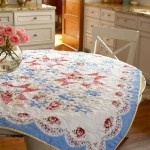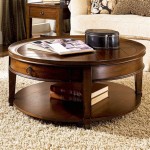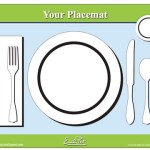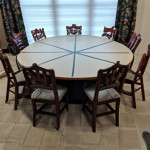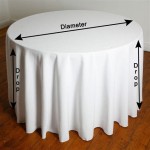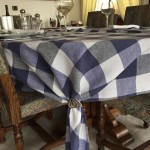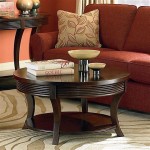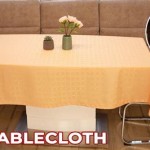How to Use a Plastic Tablecloth as a Backdrop for Parties
A plastic tablecloth serves as an inexpensive and versatile backdrop solution for parties and events. While often overlooked as merely a table covering, its affordability, availability in various colors and designs, and ease of use make it a practical alternative to more expensive or complicated backdrop options. This article provides a detailed guide on how to effectively utilize a plastic tablecloth as a backdrop, covering preparation, installation, and creative enhancement techniques.
Choosing the Right Plastic Tablecloth
The first step in creating a successful plastic tablecloth backdrop involves selecting the appropriate tablecloth. Several factors are considered when making this choice, including size, color, material thickness, and design.
Size: The dimensions of the tablecloth are crucial for achieving the desired backdrop coverage. The intended backdrop width and height must be measured. Ideally, the tablecloth should be significantly larger than these measurements to provide ample material for draping, securing, and adjusting. A standard rectangular tablecloth may suffice for smaller backdrops, while larger events often require multiple tablecloths joined together or extra-long rolls designed for extended surfaces. Consider a slight overlap if joining multiple pieces to minimize gaps and ensure a seamless appearance.
Color: The color of the tablecloth must align with the party's theme and overall aesthetic. Solid colors offer a clean and classic look, suitable for a wide range of events. Bright, vibrant colors are ideal for children's parties or celebrations with a playful atmosphere. Muted or pastel shades can create a more sophisticated and elegant ambiance. Alternatively, patterned tablecloths featuring stripes, polka dots, or thematic designs offer a more visually engaging backdrop. When selecting a color, consider the lighting conditions of the venue. Dark colors absorb light, potentially making the backdrop appear smaller and less vibrant in dimly lit spaces. Lighter colors reflect light, helping to brighten the area and create a more open feel.
Material Thickness: The thickness of the plastic material impacts its durability and opacity. Thicker tablecloths are less likely to tear or rip during installation and use. They also provide better opacity, preventing any background elements from showing through. Thinner tablecloths are more prone to damage and may require layering to achieve adequate opacity. Generally, a medium-weight plastic tablecloth offers a good balance of affordability and durability. It is recommended to inspect the quality of the plastic before purchasing, paying close attention to its resistance to stretching and tearing.
Design: Beyond color, the design of the tablecloth can contribute significantly to the overall backdrop effect. Tablecloths with printed patterns, glitter accents, or embossed textures can add visual interest and depth. For themed parties, consider tablecloths featuring relevant characters, images, or motifs. However, it's important to avoid overly complex or distracting designs that may detract from the main event. A balance between visual appeal and simplicity is crucial for creating a backdrop that enhances, rather than overwhelms, the party atmosphere.
Installation Techniques
Proper installation is key to achieving a professional-looking plastic tablecloth backdrop. Several methods can be used to attach the tablecloth to a wall, frame, or other support structure. The choice of method depends on factors such as the venue's restrictions, the backdrop size, and the desired level of permanence.
Using Tape: Double-sided tape, masking tape, or painter's tape are commonly used to adhere the tablecloth to a wall. Double-sided tape provides a strong bond but may damage painted surfaces upon removal. Masking tape and painter's tape are less likely to cause damage but may not provide sufficient adhesion for larger or heavier tablecloths. When using tape, ensure the wall surface is clean and dry. Apply strips of tape along the top edge of the tablecloth and press firmly against the wall. Additional tape strips can be added along the sides and bottom to secure the tablecloth and prevent sagging. For added support, consider using a combination of tape and staples or tacks, particularly for larger backdrops.
Using Tacks or Staples: Tacks and staples offer a more secure attachment method, but they create small holes in the wall. If the venue allows for minor wall damage, tacks or staples can be used to directly attach the tablecloth to the wall. Use a staple gun or hammer to drive the tacks or staples through the tablecloth and into the wall studs or drywall. Space the tacks or staples evenly along the top, sides, and bottom of the tablecloth for consistent support. Be cautious when using this method near electrical wiring or plumbing. Check the wall's construction before proceeding to avoid any potential hazards.
Creating a Frame: A PVC pipe frame or a wooden frame provides a freestanding support structure for the tablecloth backdrop. PVC pipe frames are lightweight, easy to assemble, and relatively inexpensive. Wooden frames offer greater stability but require more effort to construct. Build the frame to the desired backdrop dimensions. Drape the tablecloth over the frame and secure it using clips, clamps, or tape. The frame can be placed against a wall or used as a standalone backdrop in an open space. Creating a frame offers flexibility in terms of backdrop placement and allows for the creation of larger, more elaborate designs.
Using Clothespins or Clips: Clothespins or binder clips can be used to attach the tablecloth to an existing structure, such as a curtain rod, a rope, or a wire. Simply drape the tablecloth over the support structure and secure it with the clips. This method is ideal for temporary backdrops or situations where direct wall attachment is not possible. Ensure the clips are strong enough to hold the weight of the tablecloth and space them evenly to prevent sagging. Clothespins and clips are also useful for creating gathered or pleated effects, adding texture and visual interest to the backdrop.
Enhancing the Backdrop's Appearance
While a plain plastic tablecloth can serve as a basic backdrop, adding embellishments and decorative elements can significantly enhance its visual appeal and create a more festive atmosphere. Several simple and affordable techniques can be used to transform a plain tablecloth into a stunning backdrop.
Adding Balloons: Balloons are a classic party decoration that can easily be incorporated into a plastic tablecloth backdrop. Inflate balloons in various colors and sizes and attach them to the tablecloth using tape, string, or balloon glue dots. Create balloon arches, garlands, or clusters to frame the backdrop or add pops of color to specific areas. Helium-filled balloons can be tied to the top of the backdrop to create a floating effect. Coordinate the balloon colors with the tablecloth color and the overall party theme for a cohesive look.
Using Streamers: Streamers add a dynamic and festive element to any backdrop. Crepe paper streamers, foil streamers, or ribbon streamers can be draped, hung, or swirled across the tablecloth to create visually appealing patterns. Attach the streamers to the tablecloth using tape, staples, or glue. Experiment with different streamer colors and textures to create a unique and eye-catching effect. Streamers can also be twisted or braided together to create thicker, more substantial decorations.
Incorporating Lights: String lights, fairy lights, or LED lights can add a magical and enchanting touch to the backdrop. Drape the lights across the tablecloth, weave them through the streamers, or attach them to the edges of the backdrop to create a soft and inviting glow. Battery-operated lights are ideal for venues without readily available power outlets. Consider using different light colors to create a specific mood or atmosphere. Warm white lights create a cozy and inviting ambiance, while colorful lights add a playful and festive touch. Ensure the lights are safely secured and that any electrical cords are properly managed to prevent tripping hazards.
Adding Fabric Drapes: Incorporating fabric drapes adds texture and dimension to the plastic tablecloth backdrop. Sheer fabrics, such as tulle or chiffon, can be layered over the tablecloth to create a soft and ethereal effect. Heavier fabrics, such as velvet or satin, can add a touch of elegance and sophistication. Drape the fabric across the tablecloth in various patterns and secure it with clips, tape, or pins. Contrasting fabric colors can be used to create visual interest and highlight specific areas of the backdrop.
Creating a Photo Booth: Transform the plastic tablecloth backdrop into a fun and interactive photo booth by adding props, accessories, and signage. Provide guests with hats, masks, glasses, and other silly items to use in their photos. Create a custom sign with the event's name or a fun message. Place a camera or phone on a tripod in front of the backdrop and encourage guests to take photos. Photo booths are a great way to capture memories and entertain guests at any party.
By carefully selecting the right plastic tablecloth, employing effective installation techniques, and incorporating creative embellishments, a simple and inexpensive material can be transformed into a stunning and memorable party backdrop.

Photo Booth Backdrop Makoodle

The Easiest Diy Fringe Tablecloth Party Backdrop Ever

Tablecloth Backdrop Diy 4 Easy Steps Mistakes To Avoid Tablecoversnow Com

Plastic Tablecloth Backdrop Easiest Diy

And Easy Party Background With Tablecloths Part 2 Rain On A Tin Roof

Use A Circle Plastic Table Cloth As High Chair Cover Just Snap Between The Tray For Back Drop Drape Covers Makes Great Photos

How To Make An Easy Diy Party Backdrop

And Easy Party Background With Tablecloths Part 2 Rain On A Tin Roof

How To Make An Easy Party Backdrop

Wedding Candy Backdrops This Looks Easy Enough To Make And I Even Like The Table Cloths
Related Posts

